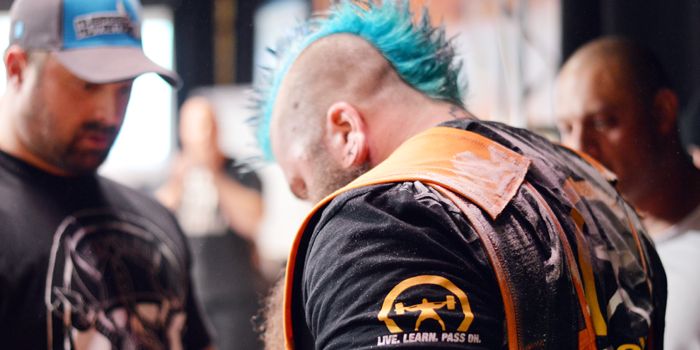
Competing as a mult-ply lifter, there are a lot of things I need to be mindful of. I am at the extreme end of supportive gear, so naturally that means there will be more factors to account for than the other levels of supportive gear. I am someone who struggles with competition and performance so this obviously gives me more things to stress about, and it's usually exaggerated, unneccessary stress. As a lifter, if I am doing good and crushing weights on the platform, it makes it easier to put up with the extra stress. But, when I am in a rut and not competing to my potential, those extra levels stress magnify and cause me to question myself. So the question is, what do I do?
Do I keep running into the same wall until I eventually hate it, or do I take a step back, remove some levels of stress factors and enjoy competing and getting stronger again? I know a few things. I know that I have goals in multi-ply and I am not ready to abandon them. I also know that I need to be stronger. I also know that I enjoy single-ply lifting much more than I enjoy mulit-ply. The gratification of lifting massive weights isn't there, but the gratification of accomplishing something that is a new challenge is. I enjoy single-ply more because I feel a stronger relationship with the weights themselves. I am more in control of the weights and my movements. The bar path is where I want it to be. I'm stronger when I am in the most control. Multi-ply gets to be a crapshoot sometimes. What I need is to clear my head and get back to the grind. I know that if I can get stronger in less gear, that will make me that much stronger in more gear.
This is why I'm currently switching to single-ply. Another reason for this is the USPA. I have been to quite a few expos with my supplement sponsor Nubreed Nutrition and the USPA usually has meets at those expos. I really like what Steve Denison and the USPA stand for. The level of competition is very high in the USPA now, both in raw lifting and single-ply lifting. I think it represents the best there is right now in those two divisions of lifting. I want to be a part of something great like that.
RECENT: The Mental Woes of Breaking in New Gear
Lifting single-ply in the USPA poses one huge obstacle for me, walking squats out. I have not walked squats out in competition for five or six years. I have been practicing walking out squats for a few weeks and admittedly it is not as horrible as I envisioned it. It is still going to be extremely challenging, but not impossible! Powerlifting and my sponsorships in powerlifting have given me access to some very amazing people in this sport. I try to take advantage of that as much as I can.
2015 XPCs
To take advantage of this, I recently sent out emails to some of the bigger names in our sport asking advice about the art of walking heavy squats out. Below are the questions I asked them along with their answers:
I have been falling into a rut both physically and mentally with multi-ply. I feel like I need to change something before I hate it. I still have goals for multi-ply, so I am not finished. I feel that I need to become stronger in less gear to become stronger in multi-ply. I enjoy single-ply lifting much more, I feel more control, and I feel a better connection with the weights. My plan for the rest of 2016 is to get qualified for the USPA Olympia, and then compete at the Olympia. This poses an interesting challenge for me — I haven't walked out weight in years, and even then it wasn't much. I have the strength to squat a thousand pounds in single-ply, but can I walk that out? I have a few questions for you about walking out squats.
1. What is the hardest part about walking out heavy squats?
Blaine Sumner: Not letting the bar slide down your back, and not letting the bar whip kill you. It shouldn’t be as much of an issue with the 55-pound squat bar, but sometimes I’ve noticed, especially around 1,000 pounds on a 20-kilogram bar, that if you hit the whip on the walkout just wrong, it doesn’t stop whipping back and forth. Scary as hell.
Dave Tate: I should point out I never used a mono until 1993. All my years competing before Westside and the first years I was there, we didn’t have access to one. So once I started using it, I never went back. For me I can’t really compare one with the other that well because I didn’t go back and forth. I do remember the issue I had with walking out was making sure my feet were even. If one was just a bit off I usually just said "fuck it," as it wasn’t worth another step to fix it.
This was also something I worked on with every set and every rep and even practiced on off days. Some jack stands back then sucked and you would have to step over a quarter-plate of steel that half the jacks had, so I wanted to be ready for any jack I would run into. Most of the meets were local level so some of the jacks I used were made with tires as the base. That was a bitch as well, because I had to begin with my feet closer than normal. Getting the weight out was the easy part. Walking back wasn’t that bad either, if your feet landed right. If I go too fired up I would screw this one up.
The real issue was getting it back to the jacks. All you had to do was make an attempt and the spotters would take it. Sometime that was a bitch, as I could barley move my foot. The other thing I hated was that the lift didn’t start until you got the squat command. You didn’t get this until the bar was motionless or the judge felt you had control of the weight. Sometimes it felt like forever holding the weight (and your air). After so long, you didn’t know if you should breathe and reset or just keep holding air.
Steve Goggins: The hardest part of walking out a squat is setting it up after you're out of the rack.
Andrey Malanichev: It is very hard to make a step, fix feet, and fix yourself. The beginning is the hardest part.
2014 RUM -- Image courtesy of Kenneth Richardson
2. Is there an advantage to walking out squats as opposed to using a monolift?
Blaine Sumner: I honestly doubt there is any advantage to walking them out. Harder to set up and more dangerous.
Dave Tate: Keep this in my context. For me the monolift was a BITCH and I sucked and always sucked at getting the weight out. I don’t know if this was weak abs but for the first few meets I still walked it out because I couldn't get the bar out off the jacks if I tried to stand it up. I think this was more of a learning process, as I had 13 years of walking weight out and this was totally different. I think I was using my steps to help get my body tight and it took time to learn how to do this with the monolift.
Steve Goggins: There's no real advantage.
Andrey Malanichev: All the advantages come to the monolift, because you can fix your feet before the movement . Walking out and using a monolift are absolutely different things. To walk out is much more harder. I would be very happy to squat with monolift but I have no opportunity to do it.
MORE: The Self-Education Lessons I Learned from John Meadows
3. Do you feel that people who walk out their squats are more legit lifters?
Blaine Sumner: I know there is a lot of bickering about this in the powerlifting community. I think mult-ply squats should be done in a mono, and I think all else should be walked out. I have a lot more respect for a raw or single-ply squat that is walked out.
Dave Tate: I think it is all what you are used to. If you have lifters like myself who only knew walking it out, that is what they know and are used to. Put them in a mono and they will have issues. I have always felt since the walk out wasn’t judged and you can do it any way you want, take as many steps as you want, etc, that the lift didn’t begin until the squat command was given. My feeling has always been the monolift was no different than a lift off on the bench press. There are many lifters who are very capable to taking the bench bar off the racks themselves but use a lift off because it’s allowed and helps them stay tight. I guess the real answer to this would be the issue of defining what “legit” means. Opinions are going to be different between lifters. The only definition of “legit” is what is described in each federation's rule book.
Steve Goggins: I'm kind of on the fence with that one, since I walked out up until I didn't have to. The new racks and even walking out of a monolift today is much easier. You only have to walk out 6 to 12 inches and squat as opposed to trying to clear squat stands that have big square bottoms that get in the way of your feet.
Andrey Malanichev: They just have a good opportunity to lift more. I'm sure monolift can add some kilos to your squat, maybe 5%. But keep in mind that the person who gets used to squatting with a monolift would hardly walk out with the same weight. 450 kilograms with a monolift is not the same as 450 kilograms walking out.
2014 GPA World Championships
4. What advice do you have to give about training heavy squats with a walk out?
Blaine Sumner: This one is tough. I’ve never trained on a mono, so my entire life I’ve walked the weight out. So since I began squatting and have continued to get stronger over the past 15 years, I’ve gradually become stronger and gradually had to walk more weight out. It was never a massive change for me. Some people believe in heavy walkouts, 110% of their max squat or so. For some people those might be appropriate, for me they never have. I think there certainly comes a particular weight—that will be different for everyone—where the walk out becomes the most challenging part. For me it used to be around 800 or 900 pounds. Now it is around 1,050 where I know I can squat the weight easily, but getting set up and controlling the bar are the most difficult part.
Dave Tate: If you want to be able to walk out heavy squats, train all your squats that way. Perhaps increase volume on the front end of the cycle and add in extra stating ab work.
Steve Goggins: If you compete with a walk out, walk out every squat. Only step back enough to clear the rack or monolift.
Andrey Malanichev: Train it hard and a lot and consistently. That is all!
5. What advice do you have about the act of walking out squats?
Blaine Sumner: I am a firm, firm firm believer in minimizing the distance and steps. I think everyone should take three steps at MAX. It really should only be two steps. I set up with approximately my squat width, unrack the bar, and take two dip steps straight back. You don’t need to clear the rack by more than three or four inches. I see a lot of people walk way too far back with it. A lot of people also have the rack height set too high. When you pick your rack height with an empty bar, then throw a thousand pounds on, the bar is going to flex a good one to two inches where it sits on the rack, so you need it lower than you think. And when the rack is too high, people get over extended and too tall trying to clear it.
Dave Tate: Practice short, steady, strong and deliberate steps. No wasted movement.
Steve Goggins: Keep feet closer together when standing up with the weight so that you step wider as you step back. You may have to close your stance some. Maybe not. Time will tell.
Andrey Malanichev: Just make fewer steps. Stepping out you lose a lot of strength. Take care of yourself and achieve everything you want to.
An added bonus tip from Ed Coan: Take your time! Going too fast will kill you. Take small steps. Squeeze the whole body and don't let all air/pressure out.










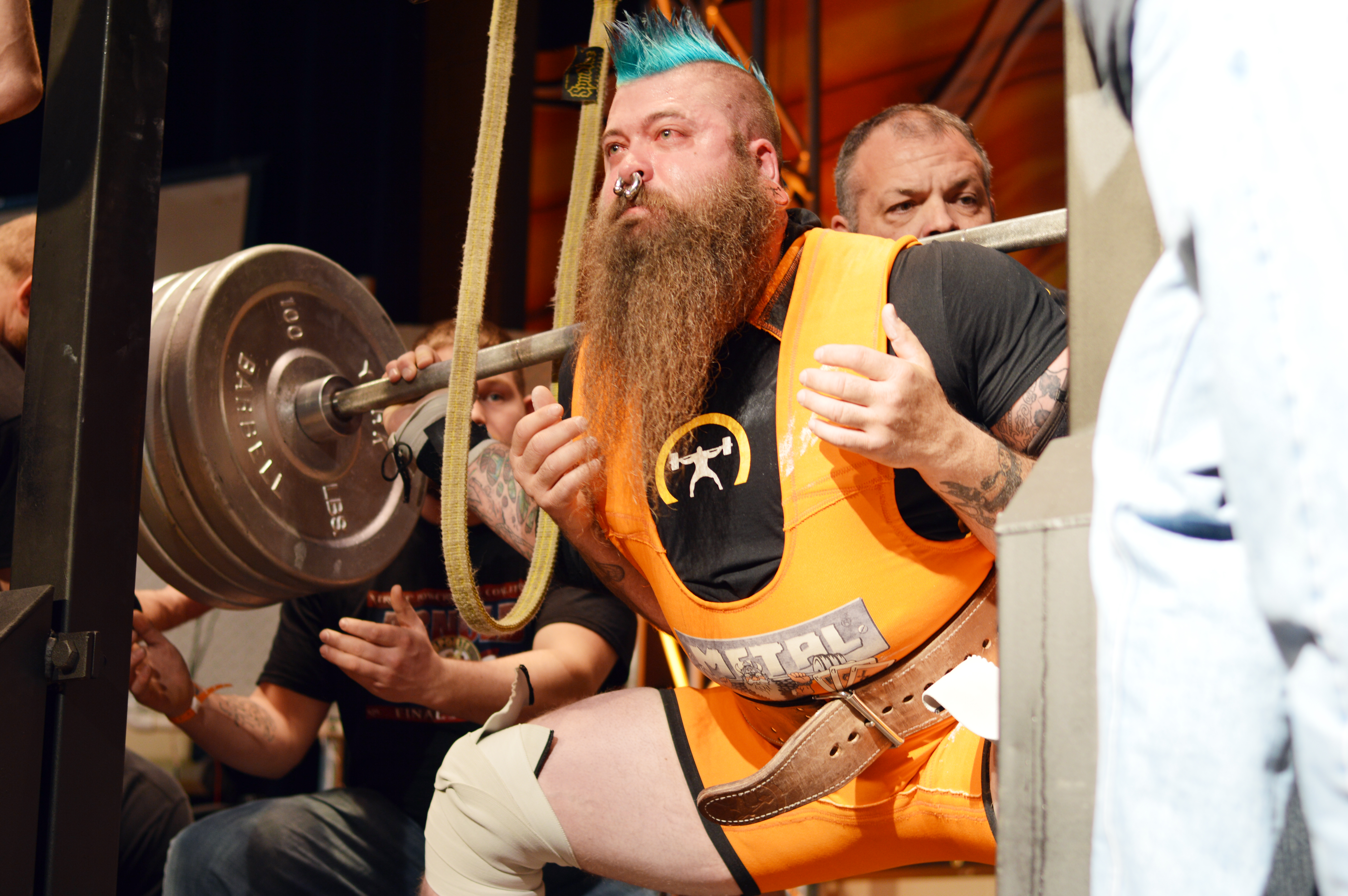
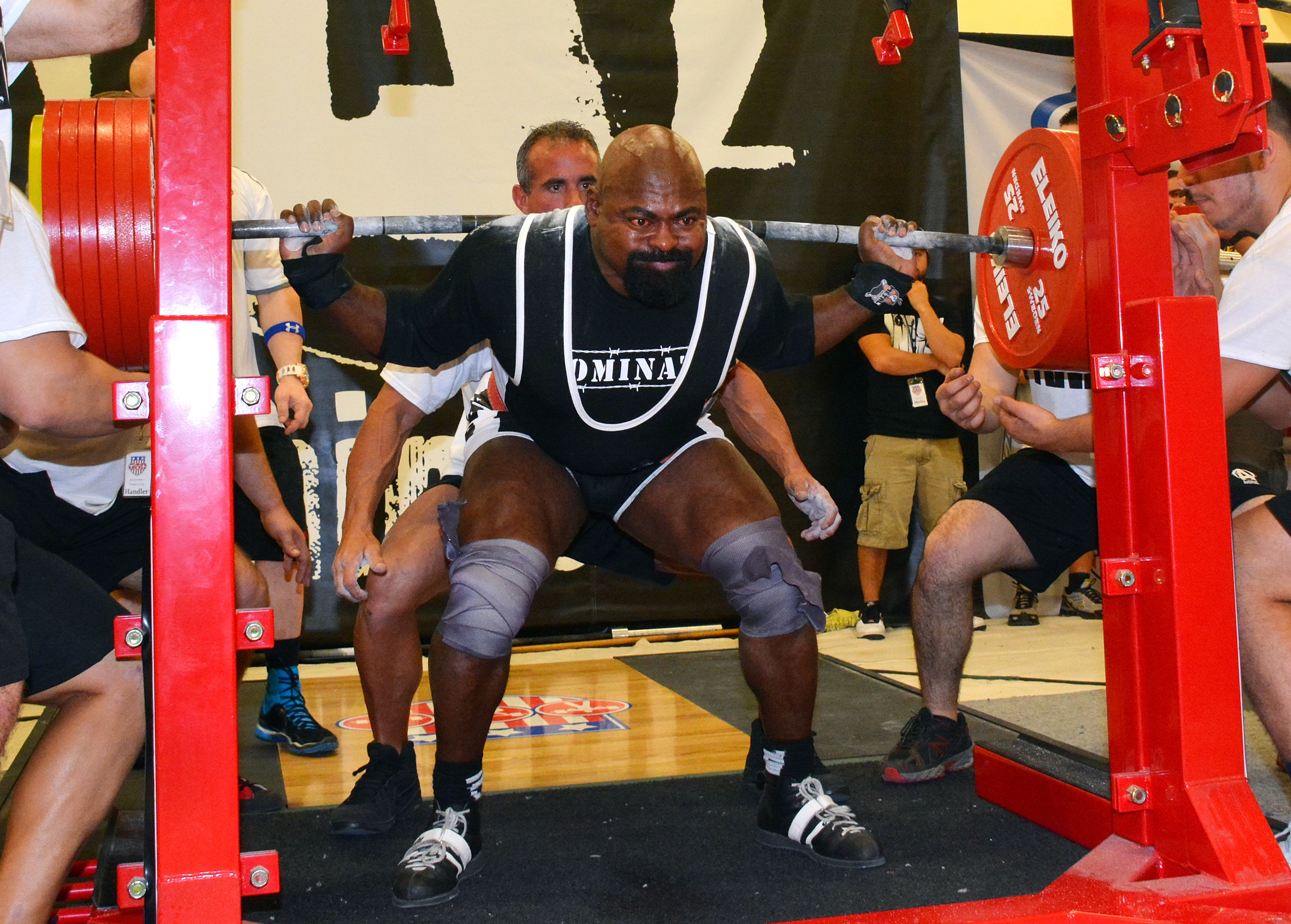
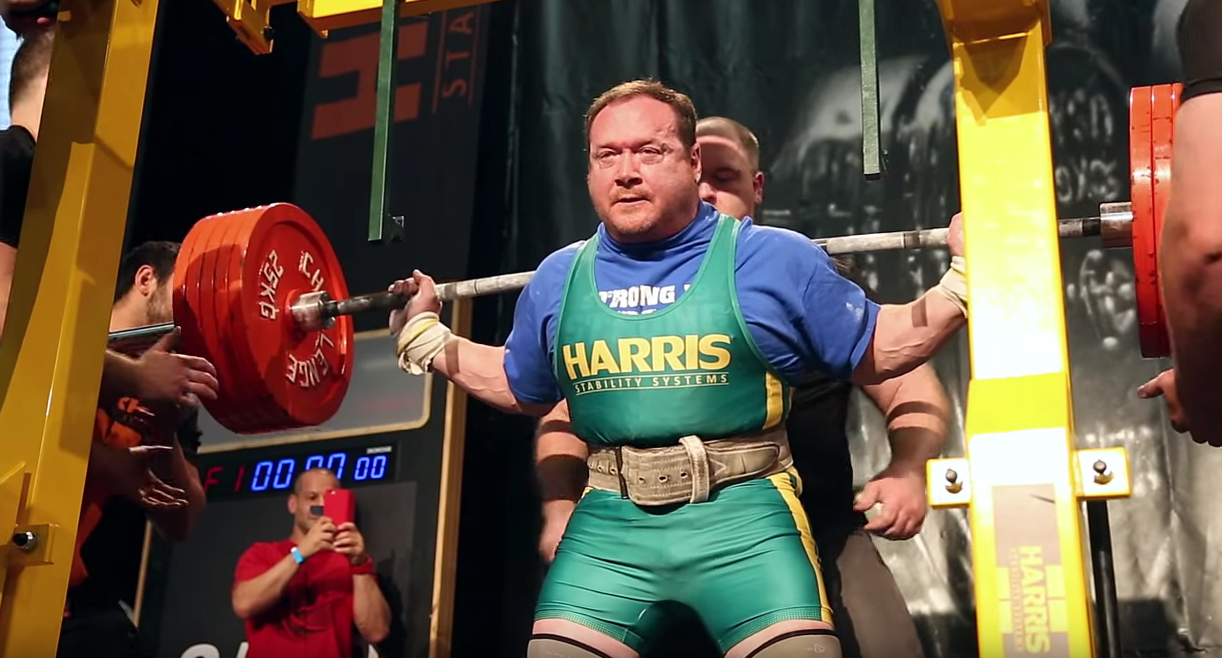
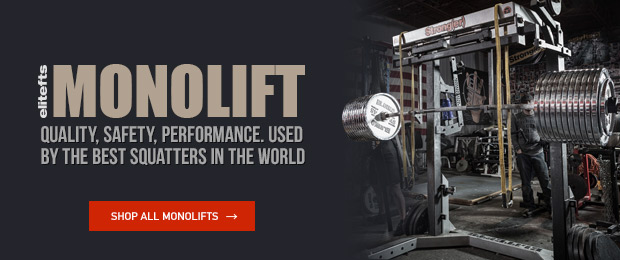
Timely, and helpful. I compete raw and don't have access to monolift so I walkout all my squats. Last meet I used a mono for the first time and it worked out fine. Training for a meet in a few weeks and have been stressing a little about getting time on a monolift. But I don't think I care anymore I am just going to do what I always do and walk them out. One big difference between last year and this year though. Upper back strength. I have been doing a lot of weighted pull ups. I feel stronger, steadier, and more confident walking out max weight squats.